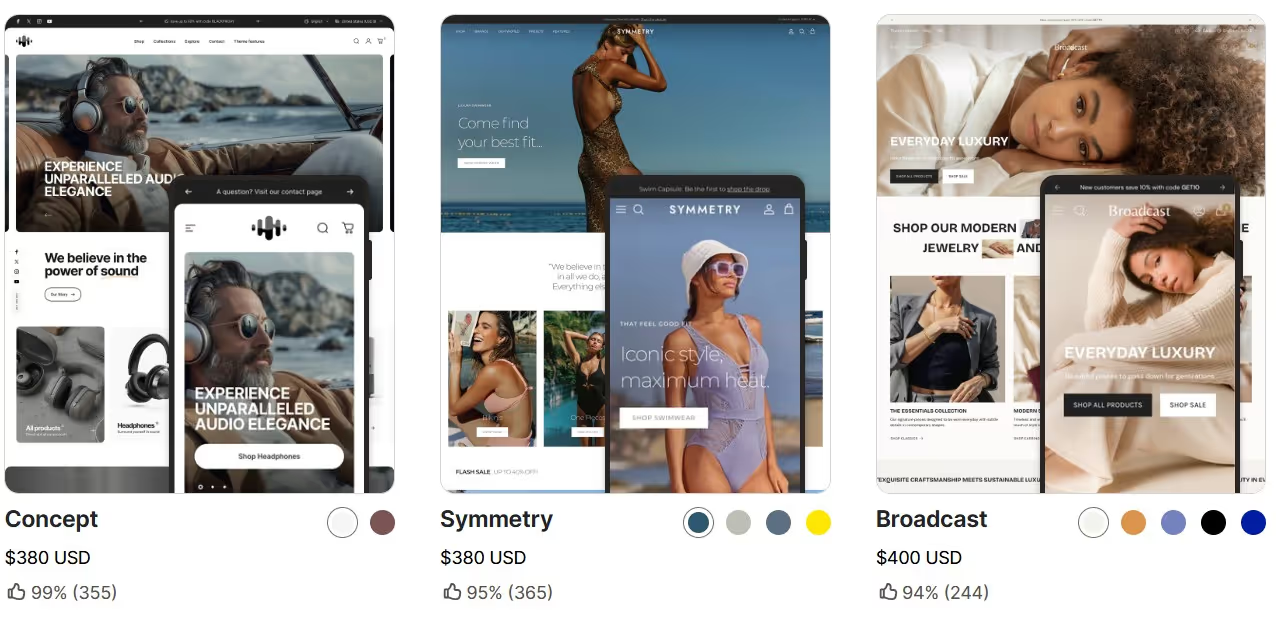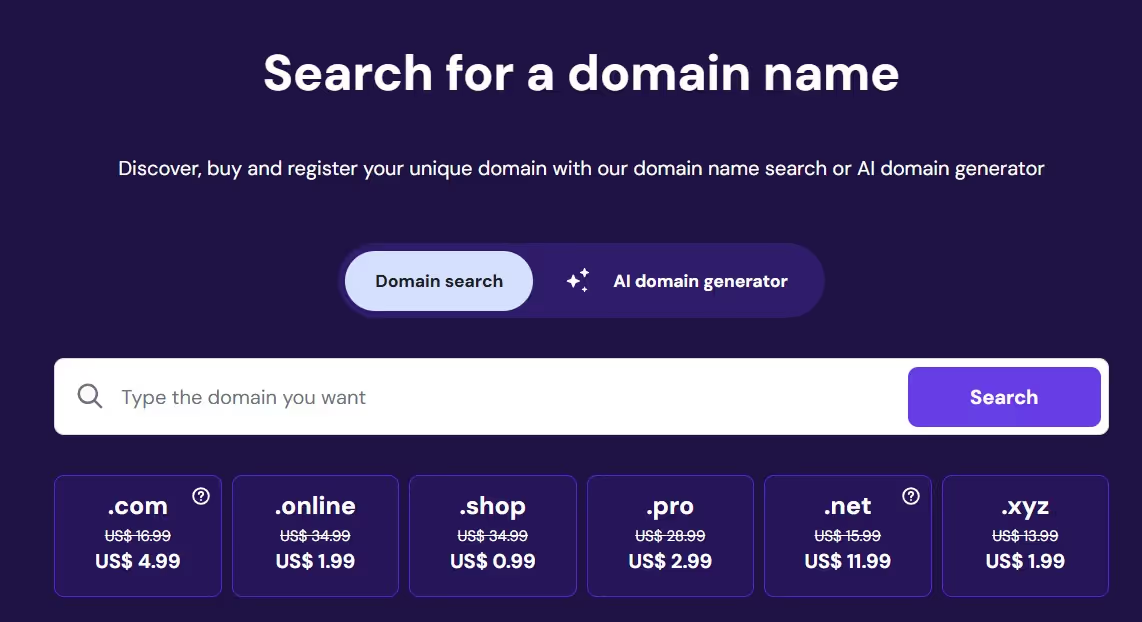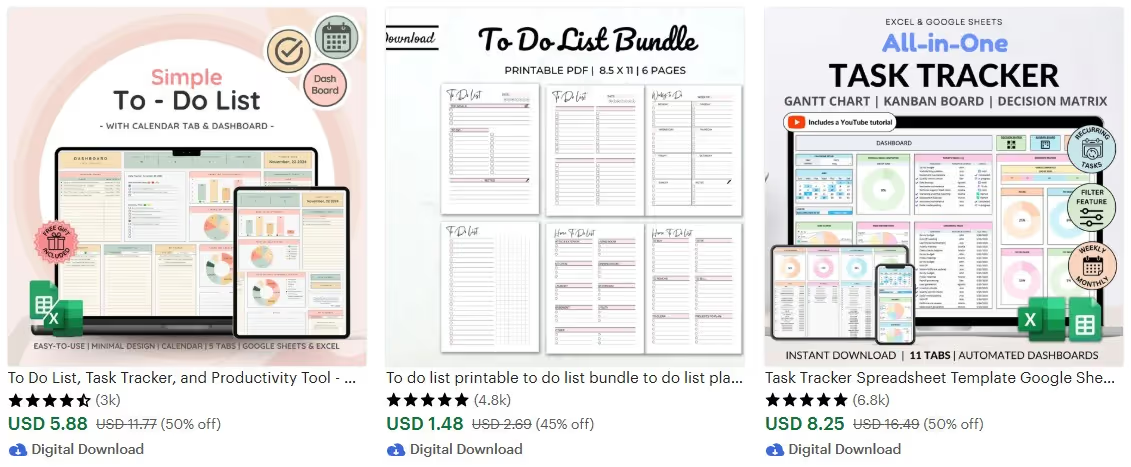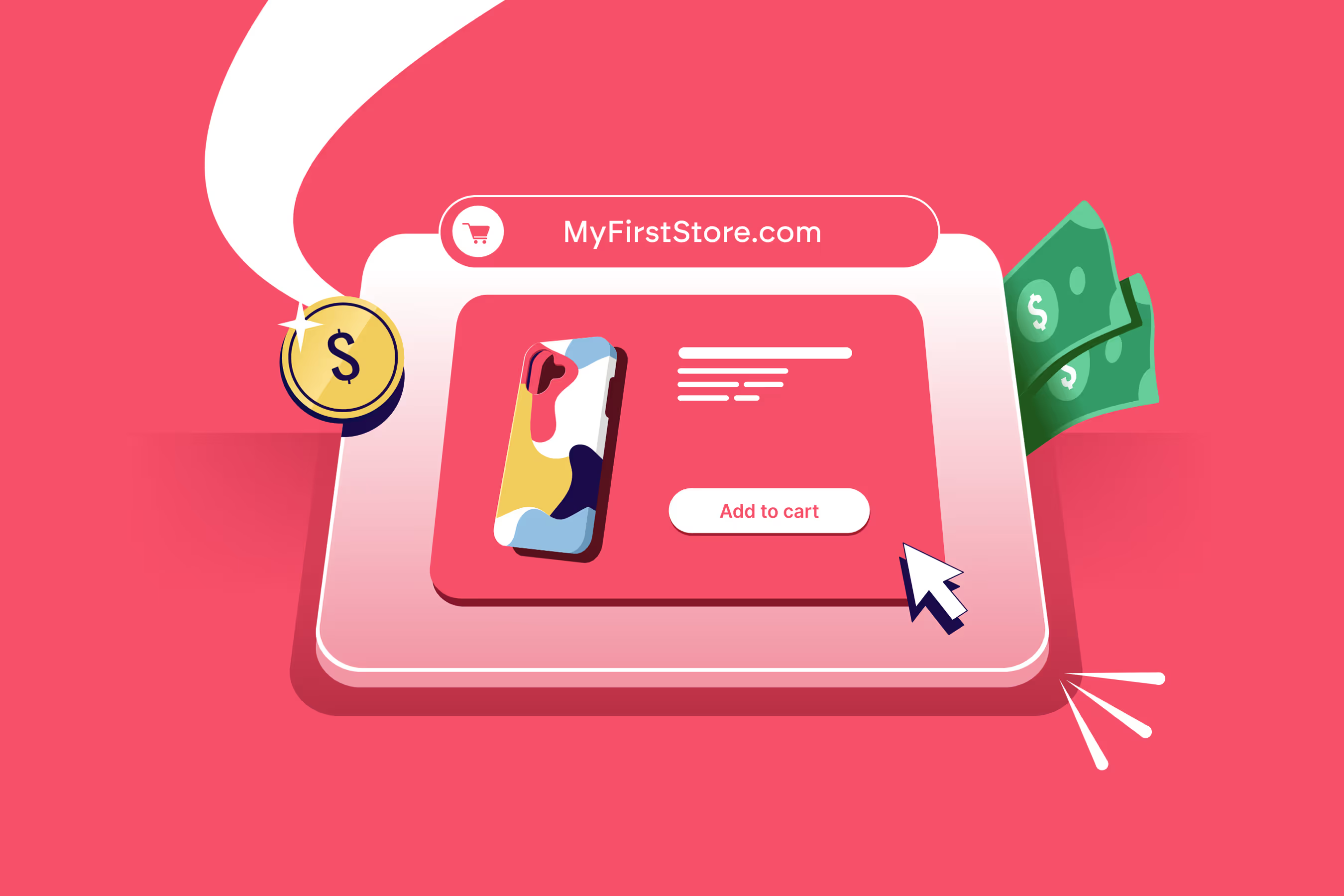Thanks to models like print-on-demand (POD), dropshipping, and digital products, it’s now easier than ever to start selling online. Many ecommerce businesses today operate without holding any inventory.
This guide will show you how to make a website to sell stuff, even if you don’t hold inventory or have technical experience. We’ll cover the best tools and products tailored for inventory-free ecommerce models.
Step-by-Step: Build a Website That Actually Sells
If you’re wondering how do I make a website to sell stuff, here’s a step-by-step guide to help you get started.
Choose What You Want to Sell
First of all, when starting a business, you need to decide what you’ll be selling. This decision affects everything about your store, from branding and design to fulfillment and customer experience.
Some of the best low-cost business ideas include custom-designed items like phone cases, tote bags, and others. When deciding on any product, consider if it has a clear niche or target market.
Pick the Right Ecommerce Website Builder
Choosing a reliable website builder is another important step when considering how to create a website to sell products. With a good website builder, you’ll not get bogged down by coding or hosting setup.
Some of the top options with drag-and-drop design with built-in store features include Shopify, Wix, and Squarespace. For example, Shopify has 100+ professionally crafted templates that you can customize and use.

Before you choose any of the ecommerce platforms, consider factors like:
- Easy integration with POD or dropshipping services
- Mobile-responsive store templates and themes
- Built-in payment processing gateways and shopping cart functionality
- Secure checkout and customer support tools
Get a Custom Domain Name
If you’re interested in how to make a website to sell stuff online, get a custom domain. It will help you stand out from other sellers and show you're running a serious business.
You can purchase a domain directly through platforms like Shopify, Wix, or Squarespace. You can also use registrars like Hostinger, Namecheap, or Google Domains.
You can use the domain name search function on registrars like Hostinger to check for the availability of your domain. A good tip is to pick a domain name that’s easy to spell and relevant to what you sell.

Choose a Print-on-Demand or Inventory-Free Model
One of the cost-effective ways to start an online store is to adopt an inventory-free business model. If you're learning how to make a website to sell stuff online, this means lower startup costs.
You can adopt a print-on-demand model to create a website to sell products. This way, when someone places an order, the platform ships it directly to the customer.
Other inventory-free business options include selling digital products or dropshipping, using platforms like Spocket, Zendrop, and others.
Set Up Product Pages and Collections
Once you've decided on your products and gotten a domain, it’s time to craft product pages and collections.
Here’s what you can include on every product page:
- High-quality images or mockups
- Clear product titles and descriptions
- Key features and benefits
- Size or material details
- Pricing and available variants (color, size)
- Estimated delivery times and fulfillment locations
You can organize your store into collections or categories to make browsing easier. You can also start marketing your store.
Optimize Your Site for Conversions
Regardless of the product type, your ultimate goal is to make sales. That’s why optimizing your site for conversions is an important step when considering how to make a website to sell stuff online.
Your site has to encourage people to take action. Use clear and compelling CTAs on the product pages and streamline the checkout process.
Also Read:
- Passive Income for Artists: Easy Ways to Make Money
- 10 Best Blogging Platforms to Make Money in 2026
- Best Etsy Alternatives for Sellers
How Can I Sell Stuff Online Without Inventory?
Two popular business models that don't require holding any inventory are print-on-demand (POD) and digital product sales.
Using Print-on-Demand with Podbase
If you're still figuring out how to make a website to sell stuff in a way that minimizes your workload, try print-on-demand. With POD, you sell custom-designed products only when a customer places an order.
For creators in the tech accessory, wall art, and drinkware niche, you can start a Shopify store with Podbase. The platform connects with your online store for a reliable fulfillment pipeline.
Simply upload your artwork, choose the products, and sync everything with your ecommerce platform. When a customer buys, Podbase prints and ships the product directly under your brand name.
Digital Products and Passive Income Models
If you’re wondering, where can I sell stuff online that involves zero shipping? Digital products are the answer.
Unlike physical goods, digital products don’t require manufacturing or even inventory tracking. Once created, they can be sold repeatedly at no additional cost.
Some popular digital products you can sell to make money include phone wallpapers, ebooks, and to-do lists. Others include social media templates, digital planners, and productivity tools. See an example of a to-do list on Etsy.

To get started with selling digital products, you need to create a downloadable file (PDF, PNG, or ZIP). Then list it on your website and automate delivery after purchase.
Also Read:
- How to Sell on Pinterest: Step-by-Step Guide
- What Is Automated Dropshipping? How to Streamline Your Ecommerce
How to Drive Traffic and Make Your First Sale
The steps on how to make a website to sell stuff, the next stage is driving the right traffic. Here are some strategies that can help you drive traffic to your store after starting a POD business:
Connect Social Channels like Pinterest & Instagram
When it comes to selling products online, social media is one of your most powerful tools. Platforms like Instagram and Pinterest are perfect for creators and small business owners because they are built around visual discovery.
Set up a dedicated business profile and upload high-quality pictures. You can use lifestyle shots, mockups, and behind-the-scenes design content. Also, use relevant hashtags so your products can appear in search feeds..
On Pinterest, create product-specific pins with strong titles, keywords, and direct links to your product pages.
Use SEO and Keywords for Product Pages
If you want people to find your store through search engines like Google, you need to optimize your content for online searches. An important step is to create unique content with well-structured headings for each product.
Clearly explain the features, use cases, and benefits. Also, include relevant keywords in product titles, meta descriptions, and image alt text.
Over time, well-optimized product pages will begin to rank on their own and bring in customers who are already searching for exactly what you offer.
Run Simple Ads (or Use Free Promotion Tactics)
Paid targeted ads on social media platforms can help you reach your target audience easily. When running ads, promote your best-selling or most visually striking product and target specific interests.
But if you’re not ready to spend money on ads, you can try other options. You can post your products in niche forums, subreddits, or Facebook groups.
For example, r/ArtStore is a Reddit community where artists share their work and promote their online stores.

You can also reach out to bloggers or content creators in your space and offer a sample for review or inclusion in their posts.
Also Read:
Top Tools to Launch a Website Without Tech Skills
Still wondering how to make a website to sell stuff? A no-code website builder can help you get started.
Shopify, Wix, WooCommerce
Top platforms like Shopify, Wix, and WooCommerce each offer unique advantages depending on your needs.
Shopify has a user-friendly interface with drag-and-drop functionality, which is ideal for users with little to no design experience. It also integrates smoothly with print-on-demand (POD) services.
Even better, it has an extensive app marketplace that allows users to expand their store’s functionality. However, the platform’s customization options can be somewhat limited.
Wix has intuitive design tools and even a free plan, but it comes with Wix branding. Its built-in marketing and SEO tools are easy to use. On the downside, it offers fewer third-party integrations than Shopify.
WooCommerce, which runs on WordPress, is free to install. As an open-source platform, you have control over the design and functionality of your store. But you need technical experience.
Best Free and Paid Website Builders
If you’re still not sure how to make a website to sell your products, there are great website builders with free plans you can start with. These include:
- Wix
- Square Online
- Big Cartel
- WooCommerce (free plugin)
Other paid options include:
- Shopify: Starting from $27/month
- Squarespace: From $25/month
- BigCommerce: From $39/month
- Webflow: From $42/month
Also Read:
Common Mistakes When Selling Online (and How to Avoid Them)
If you’re learning how to make a website to sell stuff, here are some common pitfalls you should avoid.
Not Choosing a Niche
One of the biggest mistakes new sellers make is trying to appeal to everyone. A generic store with a little bit of everything rarely connects with real buyers. If you don’t know who you’re targeting, it’s impossible to build a compelling brand or product offering.
Ignoring Mobile Responsiveness
Over 60% of ecommerce sales happen on mobile devices. If your store isn’t optimized for mobile, you’re losing more than half your potential customers. When planning how to make a website to sell stuff, pay attention to the mobile responsiveness of your site.
Failing to Test Pricing and CTAs
Many new sellers set a price and CTA button text once and never test it again. But small tweaks can improve conversion rates. If your site gets traffic but few sales, your pricing or CTAs might be the problem. You can use tools like Google Optimize or built-in A/B testing features to find what works.
Launch Your Online Store with Podbase
Ready to start your ecommerce business without worrying about inventory, shipping, or production? Podbase makes it easy to start with minimal upfront costs.
Why Print-on-Demand Works for Beginners
For anyone learning how to make a website to sell stuff, the POD model is ideal because:
- It requires little to no upfront investment
- You can test new designs or product ideas with zero risk
- It scales easily as your audience grows
- You never have to touch a product or handle fulfillment logistics
How Podbase Helps You Sell Without Inventory
For print-on-demand platforms like Podbase, you don’t need to manage inventory or negotiate with third-party suppliers. Podbase offers automated order fulfillment and delivery of products, all under your brand.
You’ll also get:
- Seamless integration with platforms like Shopify, Wix, and WooCommerce
- High-quality product mockups to showcase your designs
- Fast, global shipping to your customers
- White-label fulfillment
- Real-time order tracking and production updates
If you’re serious about learning how to make a website to sell stuff, you can book a free strategy call to get personalized advice on your store launch.
Also Read:









